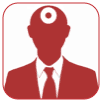Our 9th daily Comments Competition winner is Falafulu Fisi, for his comment on our post Web 2.0 Meets Medicine. Falafulu told us that the “current state of the art in medicine 2.0 of today is the automated online CDSS (Clinical Decision Support Systems)”, which he says is starting to do diagnosis via the Web. Congratulations Falafulu, you’ve won a $30 Amazon voucher, courtesy of our competition sponsors AdaptiveBlue and their Amazon WishList Widget. Here is Falafulu’s full comment:

“Medicine 2.0 ?

The current state of the art in medicine 2.0 of today is the automated online CDSS (Clinical Decision Support Systems ). A doctor in a physician in rural clinic could upload medical data , such as lab tests, patients personal infos (age, ethnicity, alcohol consumption, smoker, etc,…) and so forth. These medical data are queried the CDSS from a central server somewhere to give diagnosis (specific cases only and not general) of the situation based on the patient’s data which has just been sent thru.
Another type of unstructured medical data is if a suburban clinic with a facility for MRI medical imaging, EEG & ECG readers, etc,… could just take scan the patient and upload those images or EEG/ECG to query the CDSS to give a diagnosis of the current image/EEG/ECG that has just been sent thru based on similar images/EEG/ECG signals that have been stored & index by the CDSS.
CDSS is not new, it has been adopted in clinics and major hospitals over the last 30 years or so, but this time, it is moving into the internet, ie, automated diagnosis anywhere at anytime. CDSS is frequently covered in certain issues of the Journal of Artificial Intelligence in Medicine.
I am currently developing a small CDSS for automated EEG/ECG diagnosis, using DSP (digital signal processing) & machine learning algorithms (this is my hobby). This app is to be deployed at Auckland Hospital’s Liver Clinic Unit, for internal use only and not web-enabled. If the staffs at the clinic find it useful, then perhaps I will look to further develop it for commercial use, where I will include MRI image diagnosis (image retrieval classification) system and other specific diseases. There are tons of publications in these areas.
I agree that medicine-2.0 is on the horizon where it will be widely adopted.”










